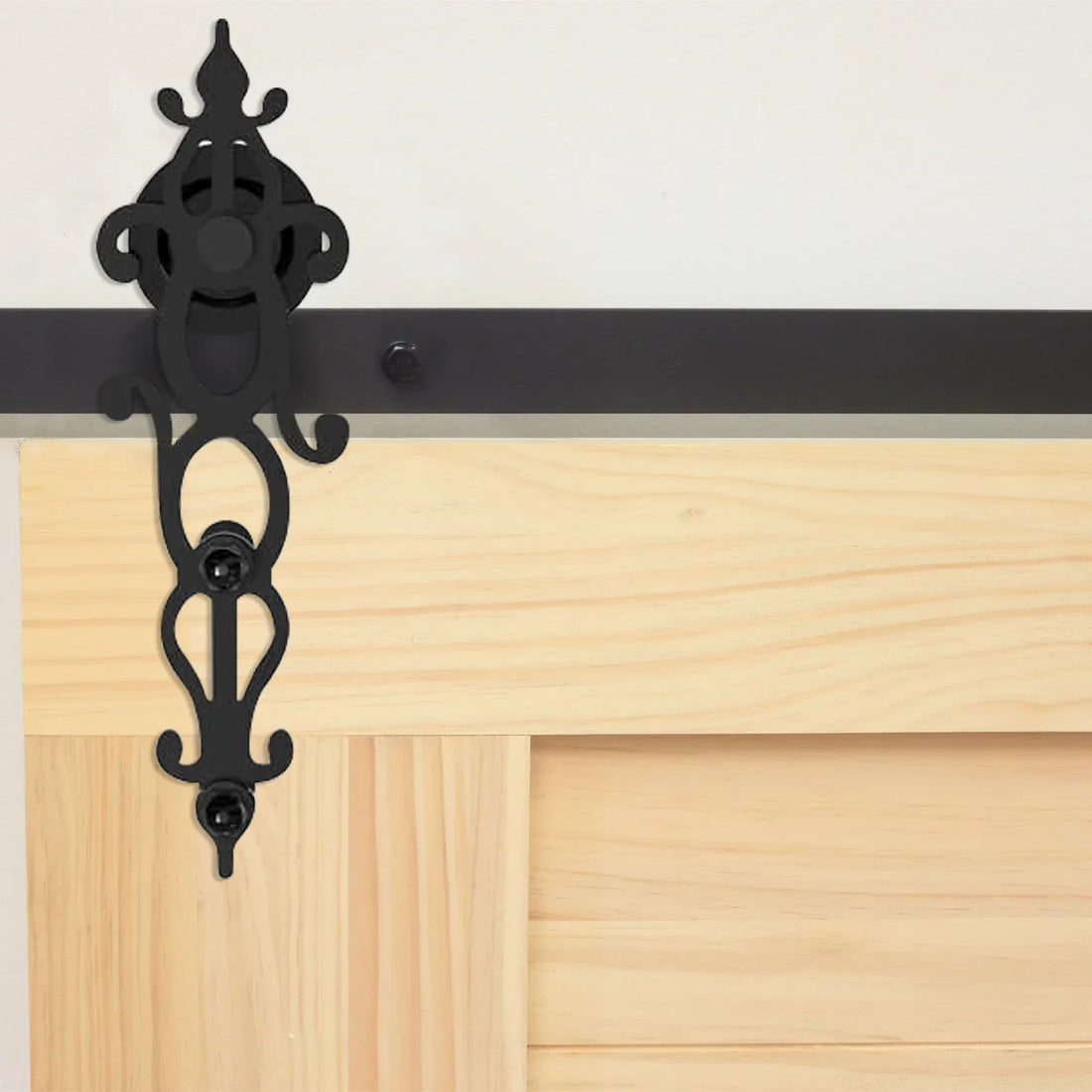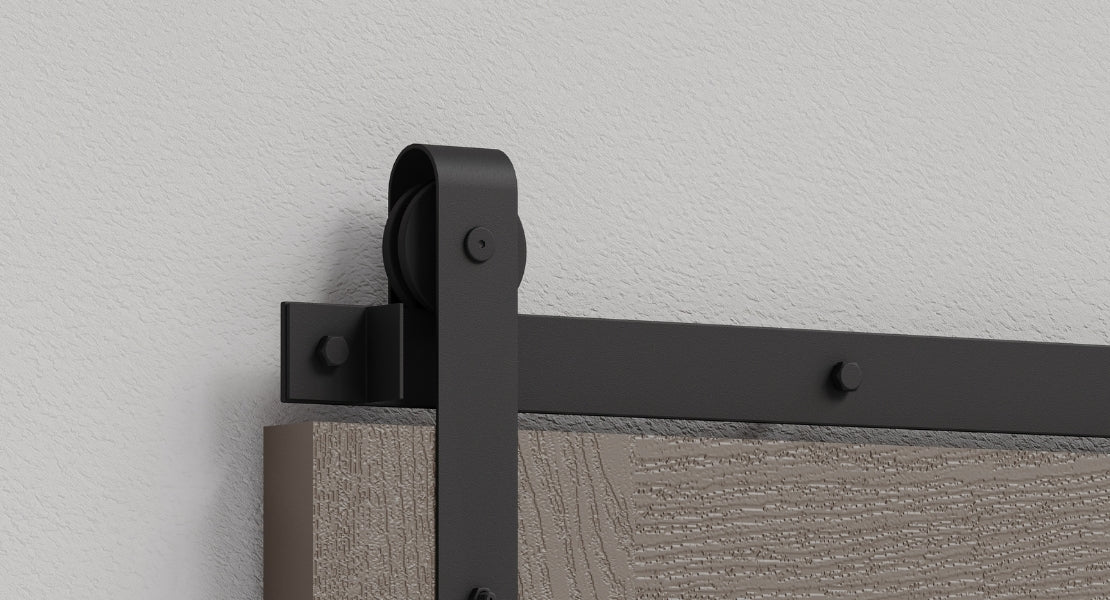
DIY Barn Door Insulation in 5 Easy Steps
Does your home boast stylish barn doors? If so, you may have wondered whether it was possible to insulate them!
Barn doors bring a modern and stylish look to a home. However, they often leave big gaps. These gaps can let in drafts and unwanted noise.
The good news is that there are several insulation options for your barn doors!
In this article, we will cover what you need to know about insulation materials. We will also share a simple five-step approach you can follow.
This guide will cover:
- An overview of insulating barn doors
- Different insulation options for barn doors
- A five-step guide to insulating barn doors
- DIY vs. professional insulation.
Let’s get into it!
An Overview of Insulating Barn Doors
Barn doors are a focal design point of any house. They offer superior functionality and aesthetic in comparison to other door options.
However, the gaps left between the door, door frame, and floor can be problematic!
This is where insulation comes in. One main problem with insulating barn doors is how it affects their ability to slide open and closed easily.
We’ll keep this problem in mind as we look at all your options when insulating barn doors. Let’s get started!
Different Insulation Options for Barn Doors
The first thing you will need to consider when insulating your barn doors is the material that you use.
There are several different materials available, each with their respective benefits. In this section, we’ll go over each material option including its merits and weaknesses:
Foam board insulation
The first option you have for insulation is to use foam board strips to place around the edges of the door.
These strips can be found in self-adhesive rolls which you then cut to the desired size, and place onto the edges of the door.
Foam board strips have several advantages. They are easy to cut to size. They are also affordable and usually waterproof.
However, if you want your insulation to stand the test of time, foam boards may not be the most durable material to use.
Spray foam insulation
Spray foam insulation is another good option, with the benefit here being the ease of application.
With spray foam, you can skip measuring and cutting. Just spray the insulation on the door edges with a spray gun!
Spray foam is also another more affordable option. However, like foam boards, spray foam may not be the most durable option to last over time.
Insulating blankets
A quick and easy option is to use insulating blankets to keep out the cold!
Insulating blankets are hung in the doorframe of the door to cover any gaps. The benefits of insulating blankets are that they are inexpensive and easy to install.
However, the downside is that they might seem out of place in the room. They can also cover the barn doors, which are meant to be a focal point of the design!
In addition, insulating blankets won’t do anything to keep unwanted noise out.
Weatherstripping and draft seals
Weatherstrips are seals made of hardy materials such as vinyl and rubber. These seals can easily be attached to the edges of your door!
The benefits of weatherstripping are that they are durable, waterproof, and relatively easy to install.
They will effectively keep your home free of droughts and keep out noise pollution from adjourning rooms.
The main downside is that weather stripping usually costs more than other options. This is because it uses more durable materials.
Brush seals
Lastly, a great idea for insulating the gap between the door and the floor is brush seals!
Brush seals can be added to the bottom of the door. They block drafts well and let the barn doors slide open and closed easily.
Step-by-Step Guide to Insulating Barn Doors
Once you’ve decided what materials to use to insulate your barn doors, it’s time to get started with insulating!
In this section, we’ll take you through each step of the process:
1. Identifying gaps and leaks
Before you jump into insulating, you’ll want to assess where exactly the gaps are in your barn doors.
Locate and measure the gaps you want to fill before you start the insulation process so you know exactly what you need to cover.
2. Checking for signs of wear and tear
Next, check your barn for any signs of wear and tear!
Before adding more insulation to your door, make sure to fix any chips or cracks first. This will ensure your insulation is fully effective.
3. Preparing the barn doors for insulation
Before you install your chosen insulation material, check that any debris is removed from your barn doors.
You may need to clean your doors thoroughly to remove any dirt or other debris! This step will help to ensure your insulation material stays in place and is durable.
4. Installing the insulation material
Now that you’ve done all the necessary preparations, you’re ready to install your insulation!
The way you install your insulation depends on the material you chose. You should measure and cut the insulation to fit the gaps you measured earlier.
5. Check the effectiveness of the insulation
When you install the insulation, make sure to leave enough space for the door to open and close easily.
Once the insulation is installed, check the functioning of the doors. You may need to readjust the insulation if the doors are not still sliding seamlessly.
DIY vs. Professional Insulation
When installing insulation on your barn doors, you might wonder if you can do it yourself. You may also think about whether it’s better to hire a professional for the job
Let’s take a look at some factors to consider when weighing up the two options:
Cost
Unsurprisingly, hiring a professional to insulate your doors is going to take more money out of your pocket!
However, if you choose the DIY route, you will save yourself money but potentially save yourself a lot of time.
It's important to remember that the materials you choose will affect the project's cost. You will still need to buy these if you decide to do it yourself.
Competence
If you choose to hire someone to do the job, you’ll have greater peace of mind that the job is done correctly!
This may be more important to you than saving a few extra dollars. However, if you are a skilled DIYer, you may be just as competent with your own skills.
Complexity
Lastly, before choosing to install insulation yourself, you’ll need to consider how complex the job is first.
Do you have barn doors that are made of a more delicate material or that have complex latches?
In more complex cases such as these, it may be worth your while to hire a professional with plenty of experience with barn doors.
Final Thoughts
Barn doors are a stylish and modern feature in homes. However, one downside is that they often leave gaps. These gaps can let in drafts and noise.
As we’ve seen, there is a solution! You can insulate barn doors using different materials. These include weatherstripping, foam boards, spray foam, insulating blankets, and brush seals.
Each of these options has the benefit of being either more inexpensive or more durable – the choice is yours!
Installing the insulation is a relatively easy and straightforward process following our five simple steps.
However, if DIY is new to you or if you have a more complex insulation job on your hands, hiring a professional to do the job for you is well worth consideration to ensure your doors are airtight!



